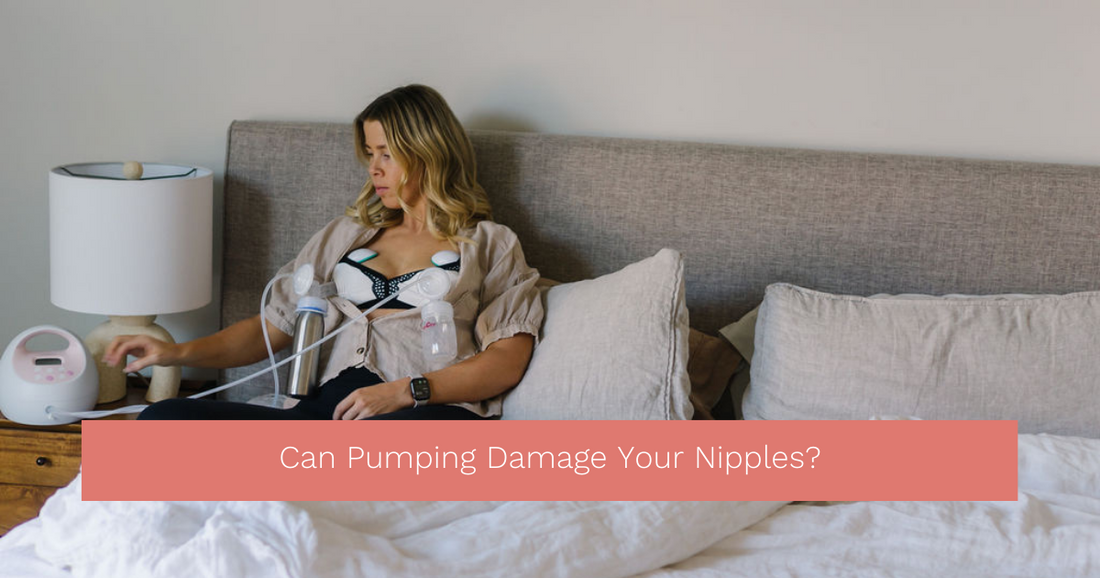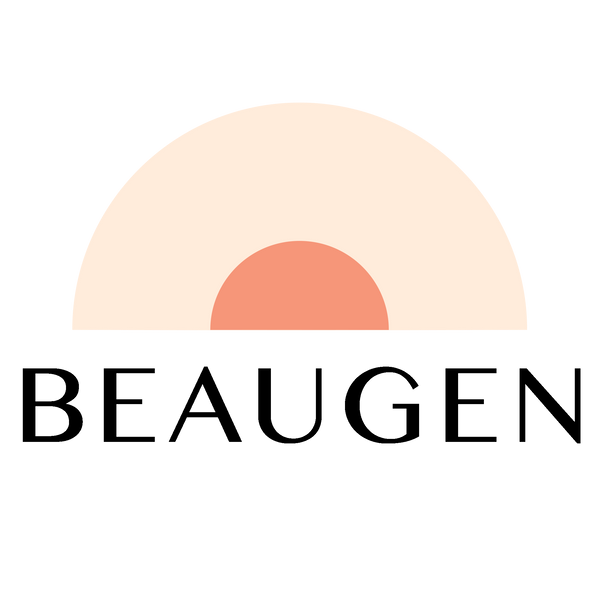Can Pumping Cause Nipple Damage?
Mommy Care Team
Thinking about your postpartum journey and whether a breast pump will figure into that experience? When you’re new to pumping, there are a lot of questions. We’ve been in this space for years and still have questions. One of the common questions that we see with moms who are exploring breast pumps is, can pumping cause nipple damage? Like many other things, the answer is, it depends…
By itself, a breast pump is not a damaging medical device. But used improperly or in certain situations, yes, a breast pump can cause nipple damage. Let’s take a look at some of these situations.
Overuse
Breast milk production is based on demand. The more you express (or feed your baby) the more your body produces. This is why some mothers use a breast pump to increase their breast milk supply and why others pump when they return to work. But too much of a good thing can be a bad thing. If you are pumping more than your body can handle, the repeated suction and resulting friction can cause nipple damage.
Feed your baby not your freezer. Don’t overdo pumping in order to create a mountain of frozen bags of breast milk. Not only is making that milk a ton of work, but maintaining and rotating through it is as well. If you are an over supplier, you can speak to a lactation consultant to learn how to manage your supply and avoid accidentally increasing it.
The good news here is that slight tweaks can help make pumping more comfortable, and avoid nipple damage or trauma. This means that you can safely increase the number of pumping sessions as your baby needs and your body allows. The next point, fit, is often an important factor here so let’s keep moving!
Overdoing the Suction
Sometimes we think of pumping like using a straw to draw out breast milk. When really, a pump is designed to mimic a baby and work with our bodies natural reflexes to express milk. Ratcheting up the suction on your breast pump can do more harm than good.
Improper Fit
Breast pumps are not a one size fits all device. A breast pump consists of various parts. The two main parts being the pump or motor itself, and the flanges which are applied to your breast and create the vacuum. Pumps themselves will work for a broad spectrum of people. The flanges though, that is where fit becomes important. Including every flange in a breast pump would make the packaging bulky and the pumps expensive. So pump manufacturers often include one to two of the most commonly used flange sizes.
Fit is also a very precise metric. Wearing an oversized sweatshirt is comfy, but using a bigger flange is not. Use a breast pump flange that is too large and too much of your areolar tissue will be drawn into the pump. This is uncomfortable at best, but at worst can cause damage to your nipples due to painful friction. This pressure can also decrease your output by collapsing your milk ducts. Over time this can have a damaging impact on your breast milk supply as well.
You might need a size that is not actually included in your pump’s packaging. If you pump, or plan to pump, please download this free ruler to help measure the base of your nipples. The resulting measurement will help you find the right size of flange to use in order to prevent nipple damage whether you pump once or ten times per day.
Elastic Nipples
Breast pump flanges have two different shapes: the conical part that connects with your skin, and then the cylindrical tunnel. Typically your nipple should be drawn part way into the tunnel of the flange. It should not hit the back of the tunnel or where this connects to the rest of your pump. If it does, there is a good chance that your body has a higher amount of Relaxin. Relaxin is the hormone that allows our bodies to stretch and expand to make room for a growing baby during pregnancy. It also provides elasticity for our skin. This elasticity makes it possible for a baby to draw your nipple into their mouth to suckle.
Moms with elastic nipples tend to find pumping painful, as with every suction their nipple is drawn up against the back of the flange, or the pump’s duct or membrane. Pump enough and your nipple can become damaged to the point where it cracks and bleeds. Trace amounts of blood might turn your expressed milk slightly pinkish in color. The term to describe this is strawberry milk.
Previously, this meant that it was very hard if not impossible for people with elastic nipples to pump. It’s also very difficult for them to nurse their infants. But our innovative breast pump cushion helps to restrict the size of the flange tunnel. Less space in the tunnel means less tissue is drawn into the tunnel. If less stretchy tissue is pulled through the tunnel, it is less likely to make it all the way to the end of the flange tunnel. Essentially our cushions help make it possible for people with elastic nipples to use a breast pump!
For more on elastic nipples check out our full post here.
Other Ways You Can Damage Nipples While Pumping
Irritating Sensitive Skin
You generally do not need to rub your nipples dry after pumping. Doing so, especially with something abrasive like a towel can cause or exacerbate nipple damage.
Topical Ointments
Your skin is an incredible organ. Generally your body does a great job of healing itself. Your breast tissue is no different. When you do experience nipple damage, simple and soothing topical treatments are best. Opt for things like coconut oil or lanolin to help aid in healing over medicated creams and ointments. Additionally many topical ointments that you might expect to promote healing, aren't safe for your baby.
Super Tight Clothing
Your breasts need support before, during, and after pumping. But they do not need restrictive support. Wearing clothing that is too tight can lower your milk supply, and cause damage to your sensitive tissue. Opt for moderately supportive clothing, and when you can use clothing designed specifically for breastfeeding moms.
Is It Permanent?
The good news if you experience nipple damage from a breast pump, your body will heal. And if you take proper care of yourself, the healing can happen quickly. Be sure to treat yourself and your body with kindness. Get plenty of water and try to rest up a bit (we know that's easier said than done as a mom).
Consider adding a pair of breast pump cushions to your pumping routine. These can protect your sensitive skin and make pumping more comfortable as you heal. This means you can protect your milk supply while you protect your body.
